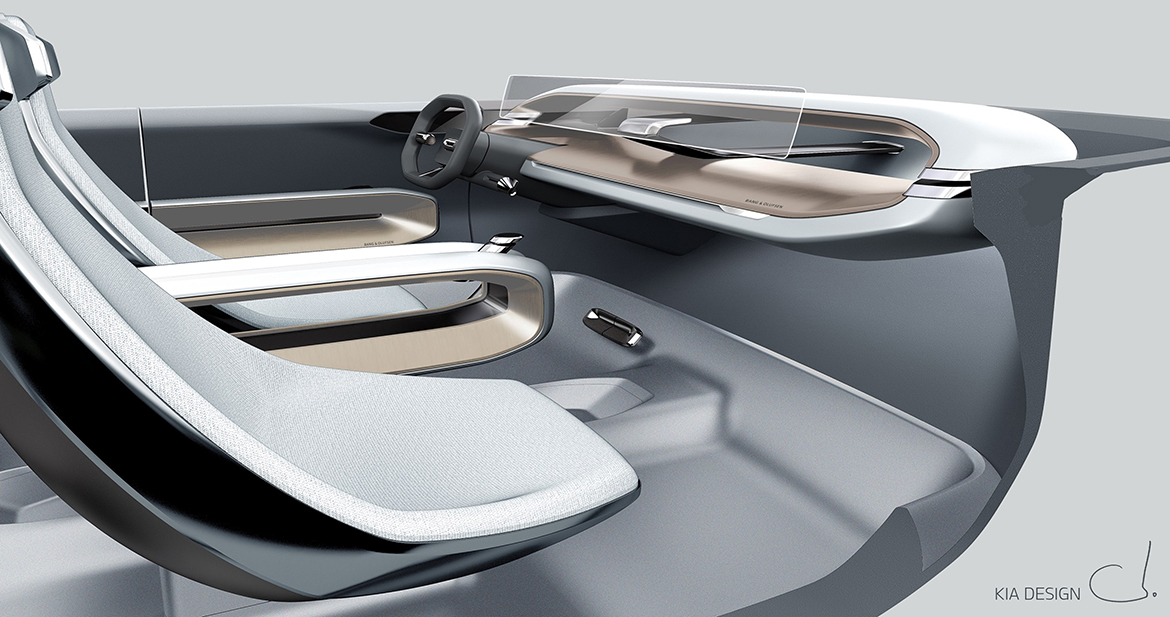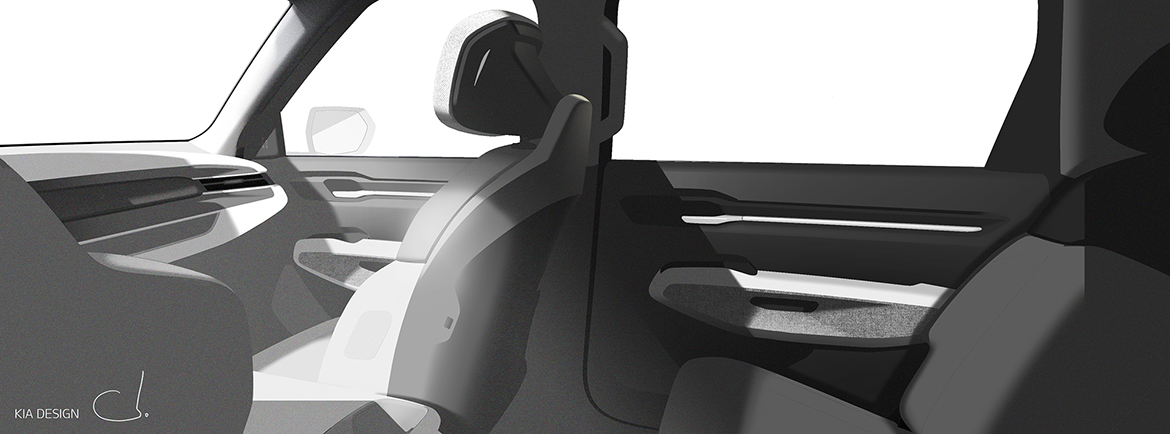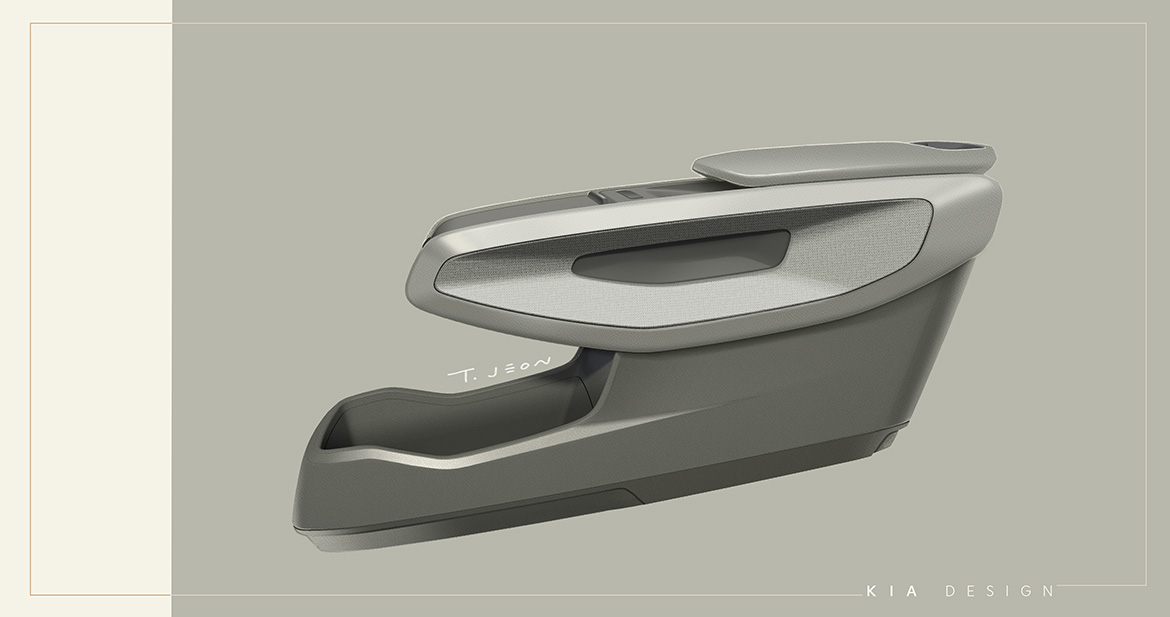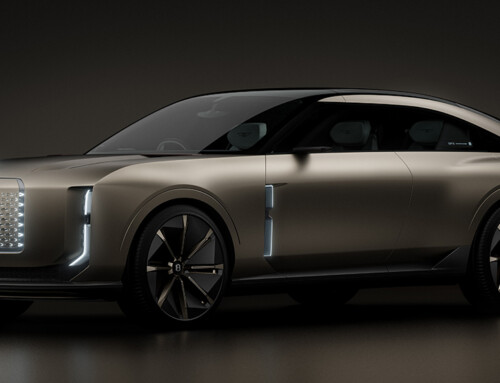MATERIALS AND TRIM
The sustainability of a car also passes through its materials. The quest for simplicity has guided the entire design of the Kia EV9, which is characterised by a spacious interior with a minimalist layout aimed at the greatest possible simplification. In line with its goal of becoming a provider of sustainable mobility solutions, the Korean manufacturer has drawn up the Design Sustainability Strategy that illustrates the programmatic lines to introduce through progressive steps more and more ecological materials in its cars. Specifically, the plan envisages the gradual elimination of the use of leather of animal origin, the application of the literally ‘ten ‘must-have’ sustainable items’ and, finally, continuous research and innovation towards new organic materials.
The EV9 chronicles the first step in this journey, with the introduction of eco-friendly interior materials such as Bio-Polyurethane, an alternative to leather and partially derived from natural ingredients such as maize. Other sustainable materials featured on the EV9 are recycled PET (polyethene terephthalate) and TPO (thermoplastic olefin) used for the dashboard, door trim and pillars. The EV9’s interior trim is made from plastic obtained from recycled waste.
The fabrics and floor mats are made of recycled PET, obtained in particular from the recycling of fishing nets dispersed in the seas. All in all, these are innovative and highly sustainable materials that, with their unique characteristics, create a premium, cosy and high-quality atmosphere. For some elements, such as switches and upholstery, organic paints were used, and for the interior finishes, BTX-free paints. The yarn and felt used throughout the vehicle are made of 100 per cent recycled PET. In conclusion, the adoption of these innovative materials, alternative to leather and derived from recycled plastic, marks an important and significant step towards an increasingly sustainable interior dimension. And the EV9 is just the beginning of the revolution.













